A walking tour of the Kowloon waterfront
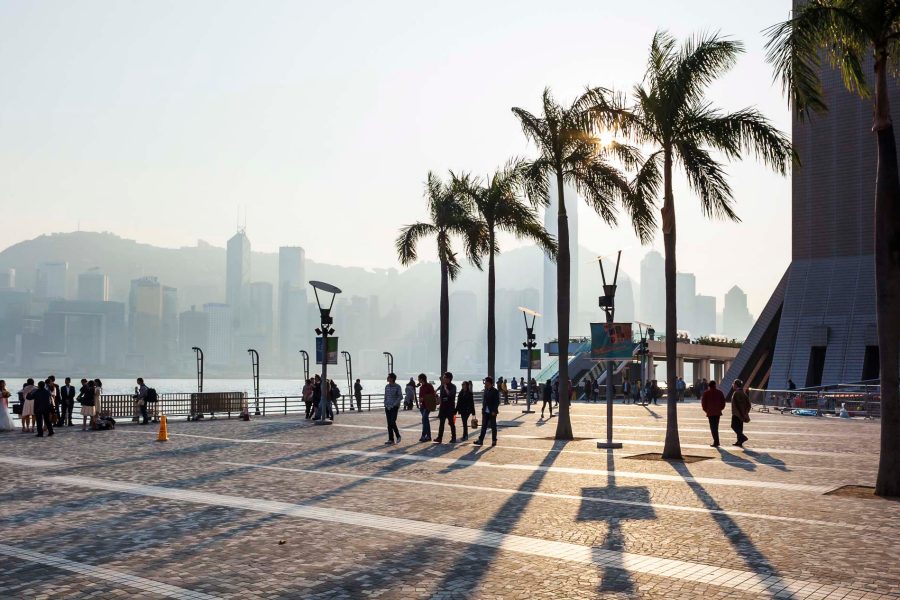
For a maritime city, Hong Kong has always had a rather nonchalant attitude to its waterfronts. In the past, they sprouted wharves and jetties; these disappeared as land reclamation marched further into the sea and roads intervened. As a result, promenades have tended to be piecemeal afterthoughts, shifting with the tides. Now they’re finally working together.
Compared with Hong Kong Island’s steep inclines, the Kowloon peninsula is relatively flat. Back in the mid-19th century, Hong Kong Island’s British residents used to nip across the harbour to play cricket, while the surrounding hills were just high enough to be useful – the marine police headquartered themselves on top of one and the observatory used another to hoist (literally) typhoon signals – without requiring a funicular railway. Land reclamation has since made it flatter, and the harbour’s now half as wide.
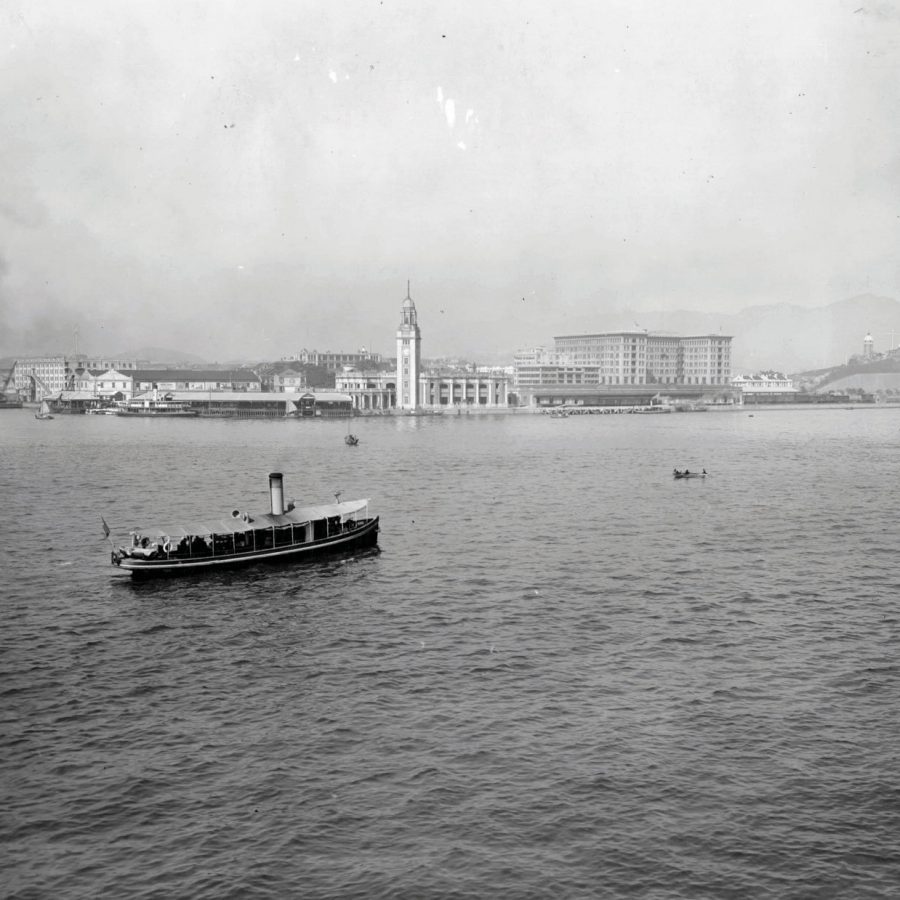
Credit: Lionel Green/Archive Photos/Getty Images
As walks go, therefore, a stroll from west to east is a combination of the easy and the spectacular. It begins at the Tsim Sha Tsui Clock Tower , next to the Star Ferry pier. That red-brick edifice marks the former terminus of the Kowloon-Canton Railway (KCR). Although the railway was officially opened in 1910, the tower wasn’t erected until 1915 and the station opened, unpunctually, in 1916. Apart from years of Japanese occupation between 1941 and 1945, the clock dictated passengers’ travels until a new cross-border terminus was opened in Hung Hom in 1975.
When the KCR station was demolished in 1978, the administration decided the site should be devoted to journeys of the mind. As a result, this stretch of waterfront includes the windowless, pink-tiled Cultural Centre , the Space Museum and the Museum of Art , due to reopen later this year after a HK$930 million renovation. In the 1980s, a government press release described the complex as ‘a high-technology nail in the coffin of the long-dead cliche that Hong Kong is a cultural desert’.
(Actually, this accusation still tends to rise, zombie-fashion, from its grave but perhaps the gradual unveiling of the West Kowloon Cultural District , beginning with the Xiqu Centre for Chinese opera last month, will put an emphatic stake through its heart.)

The joy of the flâneur, however, is to roam out in the open alongside the joggers, the fishermen, the sailors, the domestic helpers FaceTiming far-off families, the fortune-tellers, the photographers (professional and selfie), the brides, the sweepers, the world’s visitors. Hong Kong, on both sides of its harbour, has never been the sort of bashful city that hides behind walls, and the Tsim Sha Tsui harbourfront has always led a vivid existence in front of its world-class backdrop.
But in 2004, it wanted to entice tourists with a more formalised attraction, which is why the Avenue of Stars began twinkling on the Tsim Sha Tsui waterfront – Hong Kong’s version of Hollywood’s Walk of Fame. This month, after three years’ renovation, the Avenue of Stars reopens. At night, lights will illuminate the attraction to mimic the movement of the adjacent harbour, and will be powered by the city’s first wave-powered generator.
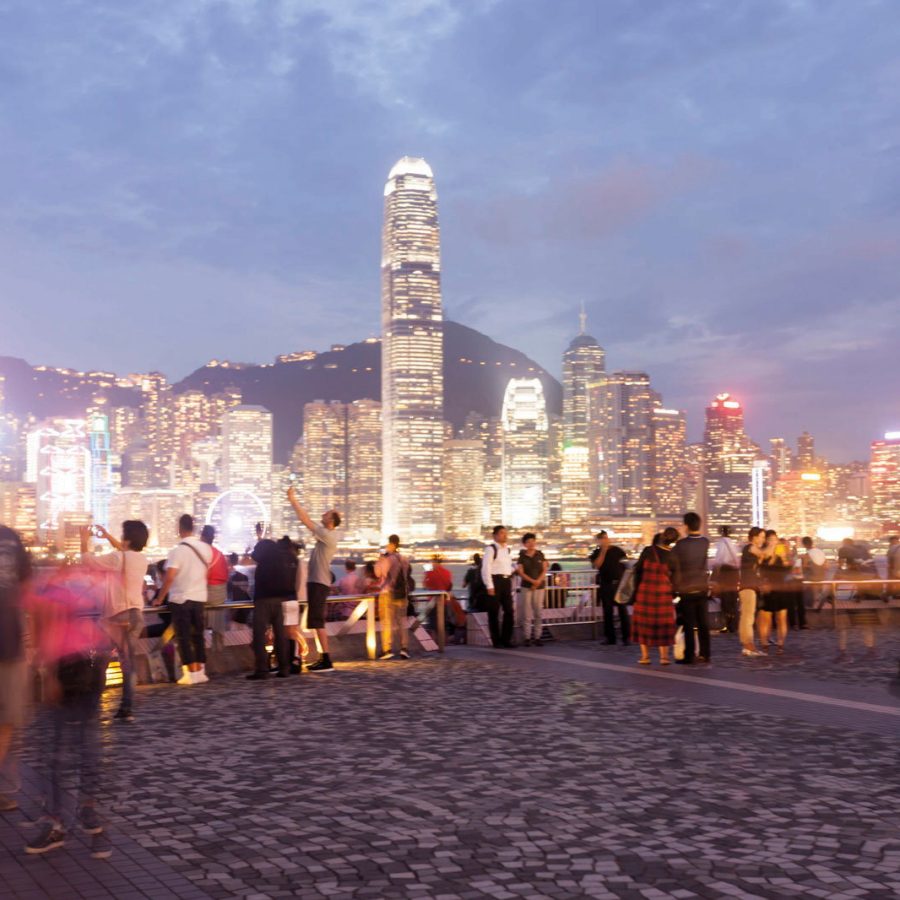
Credit: Pavel Gospodinov / Moment RF / Getty Images
The promenade of plaques honouring stalwarts of Hong Kong’s film industry was funded by the New World Group, which has also been responsible for renovating what was once Holt’s Wharf into the Victoria Dockside , a HK$20 billion art and design district. This spring, the newly built Rosewood Hong Kong hotel will open as part of this new offering.
Also back in 2004, a sound and light show called Symphony of Lights began on Hong Kong Island. It’s no coincidence that both the light show and the Avenue of Stars were unveiled the year after Severe Acute Respiratory Syndrome had effectively halted Hong Kong tourism. The show linked up with Tsim Sha Tsui in 2005; as you walk along the harbourfront, you’ll see the searchlights waiting to illuminate the night sky. In some of their protective globes, bougainvillea from nearby planters have crept in and flourished. Blooming in an unlikely space, against the odds, is the Hong Kong way.
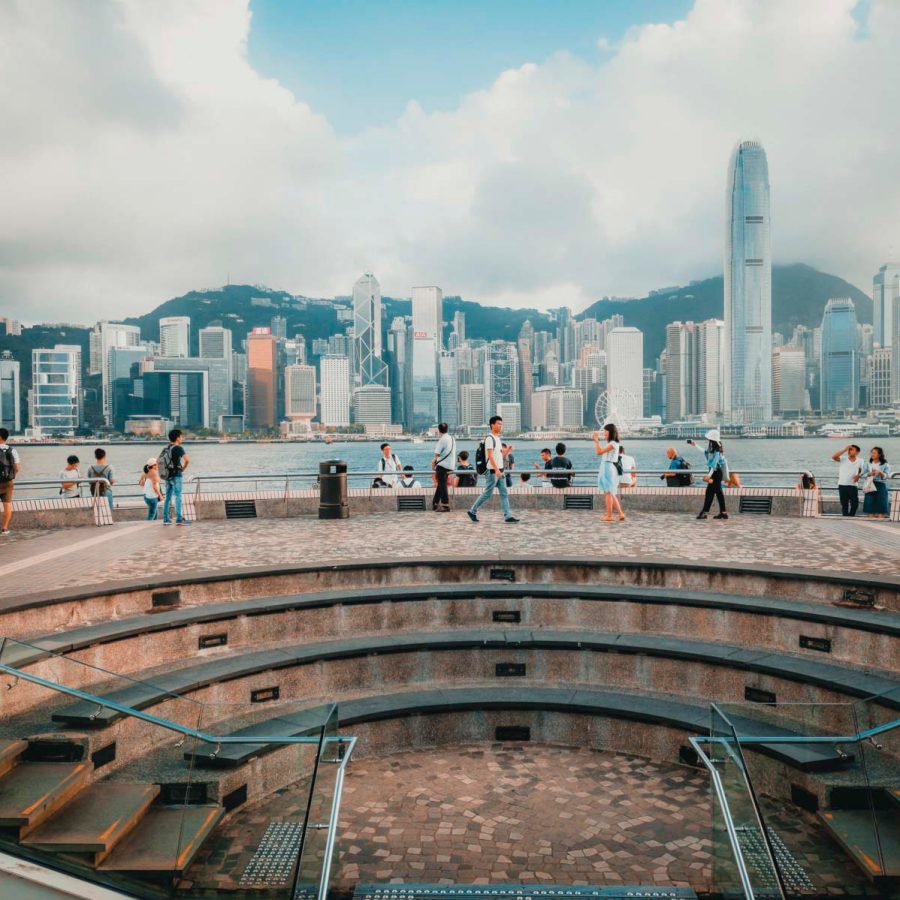
Credit: Suet Ting Cheung / Alamy Stock Photo / Argusphoto
Six years later, in 2011, the government officially announced the opening of the Hung Hom promenade, linked to the Tsim Sha Tsui promenade via the footbridge next to Salisbury Road – a Hong Kong solution to the tangle of roads beneath, which includes the Cross-Harbour Tunnel.
It’s curious how different the Hung Hom promenade feels. As there are fewer tourists, it’s calmer, more spacious and the view has shifted so that what you see of Hong Kong Island is less glitzy-spangled and more glowing-domestic. Across the harbour, the tail-lights heading home on the Island Eastern Corridor look like an endless trail of red lanterns.

Credit: Derry Ainsworth
And on a winter’s night, a traveller can feel the strength of the east wind, direct from the sea. Several months after Typhoon Mangkhut’s rampage, the ground’s puckered where trees have been ripped out; and those that remain sit at a slant. Nearby is the Kai Tak Cruise Terminal , built on the site of the old airport that closed in 1998. Before then, there was a strict height limit on buildings. Now they reach up into the surrounding sky and the estate agents, loitering outside the closed-up old Hung Hom Ferry Pier, ask equally stratospheric prices.
If you’re hungry, you can eat at a local restaurant on the Hung Hom jetty or try the Dockyard international food court below the Kerry Hotel . You can also walk back, via the footbridge, to the Tsim Sha Tsui promenade and buy a snack from one of the food trucks, a concept the government introduced to the city in 2017.
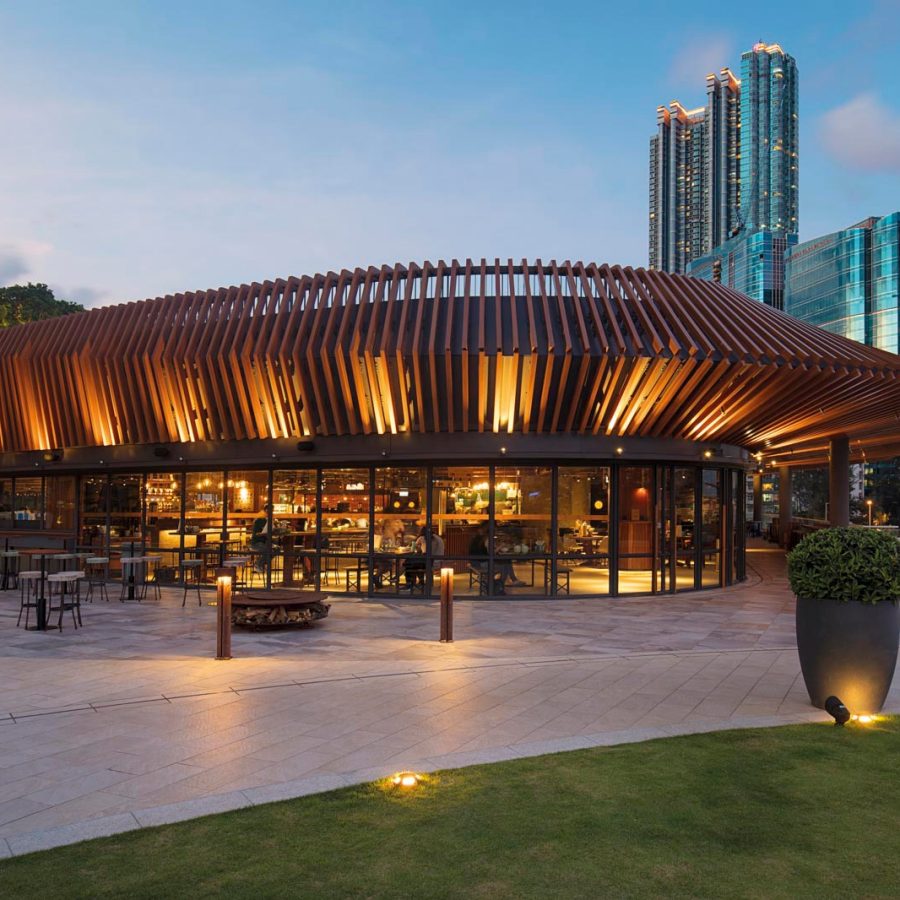
If you’re thirsty, you can have a cocktail in the Regent Hong Kong . Kowloon literally means ‘nine dragons’ in Cantonese and the hotel lobby was designed on feng shui principles so that those fantastic beasts could glide through its glass, unimpeded, for their dawn dip in the harbour. You won’t see them at night, but at 8pm, when the Symphony of Lights starts and the sky turns frantic with jabbing green fingers, you might believe that aliens with ADHD have taken over Hong Kong Island.
Once the show ends, the crowds, mostly, disperse. The island across the water still shimmers like a tremendous jewel, part of a giant’s hoard. The sea slaps against the wall as if it would rather like to have its turn at reclamation. The barges, the junks, the ferries and sampans pass to and fro on their mysterious, ceaseless maritime business. But the wanderer stands still for a few minutes, looking.
Hero image: Nomads.team / Shutterstock
Hong Kong travel information
- China – the Chinese Mainland, Hong Kong SAR, Macao SAR and Taiwan Region
- Hong Kong SAR - English
- Chinese Mainland (China) - English
- Taiwan, China - English
- 香港特別行政區 - 繁體中文
- 中国內地 - 简体中文
- 中國台灣 - 繁體中文
- Africa
- South Africa - English
- Asia
- Bangladesh - English
- Korea - English
- Singapore - English
- Cambodia - English
- 한국 - 한국어
- Sri Lanka - English
- India - English
- Malaysia - English
- Thailand - English
- Indonesia - English
- Maldives - English
- ประเทศไทย - ภาษาไทย
- Indonesia - Bahasa Indonesia
- Myanmar - English
- Vietnam - English
- Japan - English
- Nepal - English
- Việt Nam - tiếng Việt
- 日本 - 日本語
- Philippines - English
- Australasia
- Australia - English
- New Zealand - English